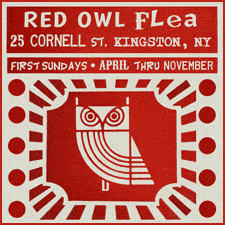There was a time when no respectable casserole or Jell-O salad was served in anything but a brightly colored piece of Pyrex glassware — and every cupboard was stacked high with functional mixing bowls, baking dishes, and storage containers. They were a kitchen staple – decorative and functional and instantly recognizable for their shapes, colors, and patterns.
When my grandmother’s house was sold in 1991, Pyrex was past its prime – still holding its place in the kitchen for its functionality but relegated to the back of the cabinet so as not to clash with her recently remodeled and updated kitchen. Yet of all the things she had that I could keep when we packed up her belongings, her pink Pyrex nesting bowls and cast iron cookware were the things I wanted most. Today, these Pyrex mixing bowls are on display on my countertop and used daily, valued for their functionality, loved for their retro look, and cherished for the memories they evoke of my grandmother and being in her kitchen.
Pyrex was developed in Corning, New York in 1908 at the Corning Glass Works. Here, the company developed a borosilicate glass that could withstand extreme heat and cold without breaking. They called the glass “Nonex” and used it in battery jars and railroad lanterns. Ironically, Nonex’s strength meant battery jars and lanterns no longer broke and needed replacing, so the company looked for other ways to use its heatproof glass.
As the story goes, it was a woman named Bessie Littleton, who was married to Corning scientist Jesse Littleton, that found Corning’s new use for Nonex glass in 1913. After an earthenware baking dish cracked in her hot oven, Bessie asked Jesse to bring home a Nonex battery jar for her to experiment with. The sponge cake Bessie baked in the jar turned out perfectly, and the jar stayed intact. This sent Corning down a new path: cookware.
Corning launched its first Pyrex line (Pyrex combined “pie” and “Nonex”) in 1915. Here, too, women, traditionally the keepers of the home, played a substantial role in the Pyrex story, working with Corning designers and engineers to develop products that would appeal to the burgeoning women’s consumer market. By 1919, 4 million pieces of Pyrex cookware had been sold in the U.S.
The colors and patterns most collectors covet for their Pyrex collection were not introduced until the fall of 1945 and, later, new styles and decorative patterns would further enhance the attractiveness of the color ware line. Seasonal design releases became popular in the 1950s and 1960s and quickly became popular gift items. New standard patterns and promotionals continued to be introduced up until about 1983 when the decorative appeal of Pyrex waned, making them look dated in the face of new cookware items and materials.
Corning divested itself of the Corning Consumer Products Company (now known as Corelle Brands) in 1998 and production of consumer Pyrex products went with it but not before leaving a legacy of millions of pieces of beloved and well-used glass cookware items behind in what is estimated to be 80 percent of American households.
Today, the dated (now dubbed vintage) look of Pyrex has immense appeal for collectors and among decorators, designers, and vintage devotees for its distinctive period look, colors, designs, shapes, and timeless functionality. For decades, these items could be picked up for dollars at thrift stores, tag sales, and flea markets. Not so anymore. Shows such as “Mad Men” and “The Marvelous Mrs. Maisel” have brought Pyrex back into style, sparking a vibrant resale market.
According to a recent article in the New York Post, “Pyrex dishes are fetching big bucks as dealers make rare finds they call the ‘holy grail’ and snap up nostalgic kitchen pieces as seen in their favorite Netflix shows.”
Louis Prizzi, 35, a vintage dealer in Long Island, New York, told Fox News Digital that he casually picked up a small blue Pyrex “Butterprint” bowl at a flea market, which he turned around and sold for $2,100 on eBay after the reaction he got from Pyrex enthusiasts online. “So, it’s a never-produced fifth piece — and that’s the reason it is rare and desirable, and commanded that price,” Prizzi said.
At Cedar Chest Antique Mall in McGregor, Texas, store manager Tim Dowdle said a set of bowls in the harder-to-find “Gooseberry” print, produced between 1957-1966, sold for $699 last month.
“Lucky in Love,” a one-quart casserole dish featuring green grass and clovers with pink hearts scattered throughout, most likely a test piece or limited-release item that was made only in 1959 according to the Corning Museum of Glass, sold for over $4,000 on eBay in 2015.
Yvette Egan, owner of the Etsy shop, ParkwoodTreasures, says ‘space savers,’ called such because they could fit in the refrigerator and go from oven to refrigerator, especially the “Pink Daisy” pattern, are hard to find and in her shop those in mint condition can bring in over $2,000!
The next time you are out thrifting and antiquing, take a closer look at the Pyrex that catches your eye. It could be worth a whole lot more than the memories and functionality it can bring to your kitchen.





Related posts: